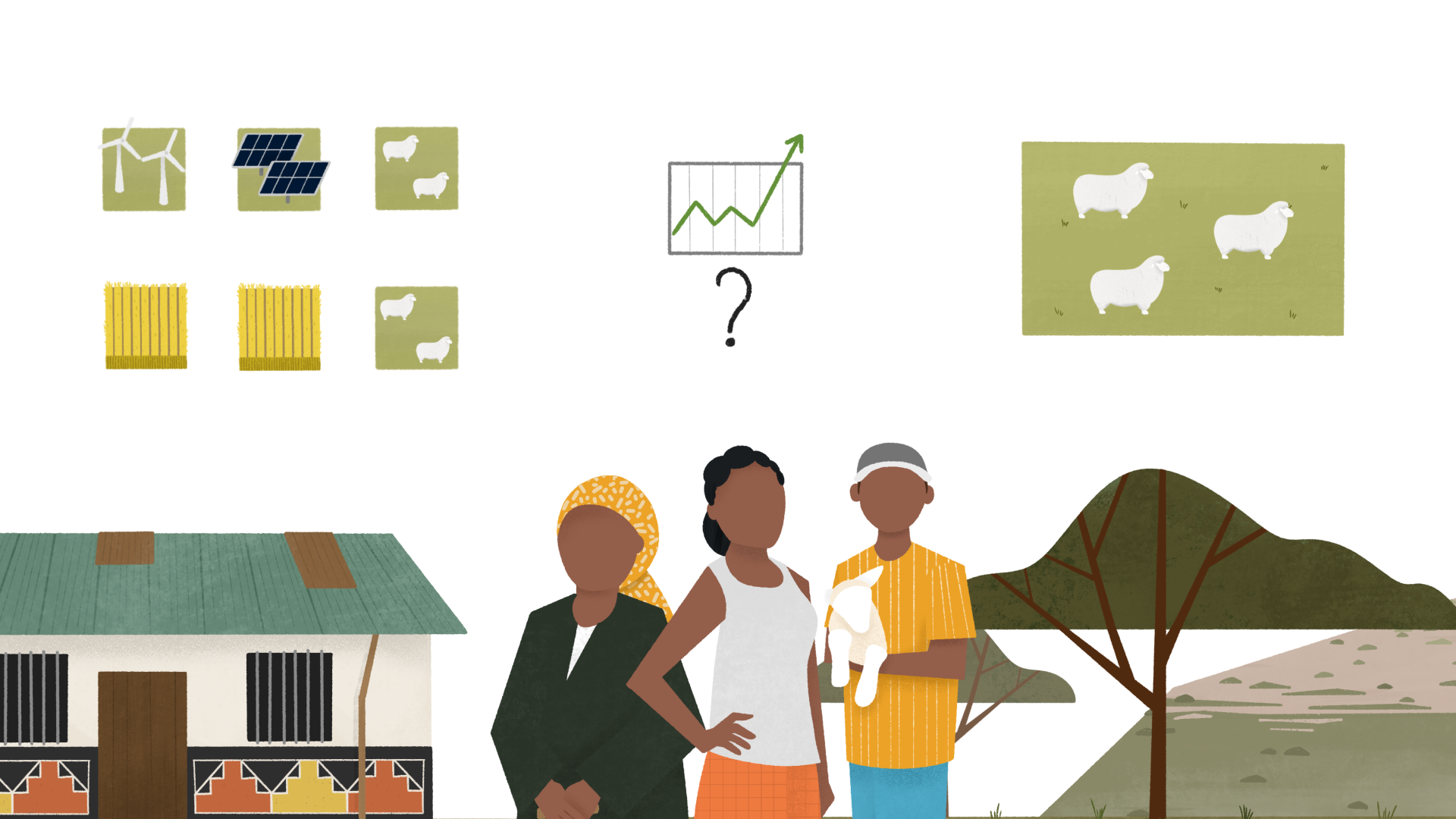How does citizen monitoring work for green accountability projects?
Our approach will focus on four key sectors: The Voluntary Carbon Market, Renewable Energy, Waste and Recycling, Conservation and Reforestation.

This is a simplified version of how our citizen monitoring approach works for projects like reforestation, renewable energy, recycling schemes, and other green development projects — and remember, it can vary by location. If you’d like more information on the approach or to ask any questions, get in touch.
1. Involving citizens and duty bearers
At the start of the process, we work with local communities living near proposed or existing green development projects to invite citizens to become monitors. This is also the point when the wider community learns about the monitoring initiative and decides how monitors will be selected.
We engage the developers and authorities responsible for the project (known as duty bearers) to make them aware of the initiative, explain its aims, and secure their support for responding to issues raised through monitoring.
For some proposed new projects - before project activities even begin, we work with local partners on the ground, and communities, to meaningfully engage them in the project design process. This ensures that the voices of local communities’ shape how the project is planned, delivered, and how benefits are shared. This helps project developers minimise risks of social harm and ensure that promised co-benefits and project activities address the real needs and aspirations of the community.
2. Inclusive monitor recruitment
We work with partner organisations with a strong presence in communities to recruit citizen monitors. They use a range of methods, including outreach, advertising, and community nominations.
Every group of monitors must reflect the diversity of their community — meaning balanced participation between men and women, representation of persons with disabilities, and inclusion of people from different age groups and social backgrounds.
Integrity Action has a steadfast commitment to diversity because a diverse group of citizen monitors is more likely to identify and resolve problems that affect the whole community, including those who are often marginalised. This approach is guided by our wider work on Gender, Social, and Climate Justice
3. Citizens become monitors
Once the community is supportive, monitors have been selected, and duty bearers are on board, a group of local citizens is trained in monitoring. This includes how to use a mobile phone app to record observations on the local community impacts of the project — both positive and negative — and how to engage constructively with duty bearers. Monitors also learn what to do when it is difficult to get issues addressed and how to track whether problems are resolved.
Trained monitors will also use community survey tools within the app to gather wider community feedback on how the project is affecting their lives.
4. What have we been promised?
When monitoring begins, it’s vital that monitors understand what the project has promised to deliver, both in terms of activities (like tree planting, employment opportunities, or community benefits) and how it should be carried out (such as avoiding displacement).
Monitors learn how to identify the relevant power holders and request documentation from them — this might include project plans, agreements, reforestation maps, or carbon credit commitments. They’re also trained to check whether the project is being delivered as agreed and in line with these promises.
5. Monitoring projects and social impacts
Citizens act as volunteer monitors to observe whether projects are being implemented fairly and responsibly, and whether promised co-benefits or protections for the community are being delivered. This could include checking that promised local jobs have been provided, that no one has lost access to land without agreement, or that safe water sources remain accessible.
If they identify issues — like exclusion from decision-making, or negative impacts on livelihoods — they record these in the mobile app, ensuring the problem is clearly described and linked to the project’s original promises.
6. Problem solving
The process doesn’t stop when problems are reported. Monitors actively seek to get the problems addressed. When a problem is reported in the mobile app, the duty bearer responsible for that issue is notified and asked to respond directly, providing an update or proposed solution. In some cases, the monitor may bring together the community, project developers, and local authorities to find solutions. The way this is done depends on the situation — it might involve community meetings, private discussions, or enlisting respected figures to help.
When a problem is resolved, this is reported in the mobile app. This allows both the monitors and the wider system to track not just problems, but how many have been resolved — and how quickly.
In any initiative, steps 5 and 6 repeat as monitoring continues over the life of the project.
7. What does the data say?
Data is a powerful tool in this approach. Across multiple green projects being monitored, the data can reveal which types of issues occur most frequently and which problem-solving strategies are most effective. It can also highlight where systemic issues need to be addressed, such as consistent failures to involve communities in decision-making or ongoing negative impacts on livelihoods. All monitoring data is shared in real time on our GreenDevCheck website, giving global stakeholders the reassurance that green projects are delivering promised co-benefits to local communities.
When local solutions aren’t forthcoming, this evidence can be used to advocate for changes in how green projects are designed and delivered — or even to influence standards and policies.
At the same time, Integrity Action and our partner organisations listen to feedback from citizens and duty bearers, learning lessons and making improvements as monitoring continues.

